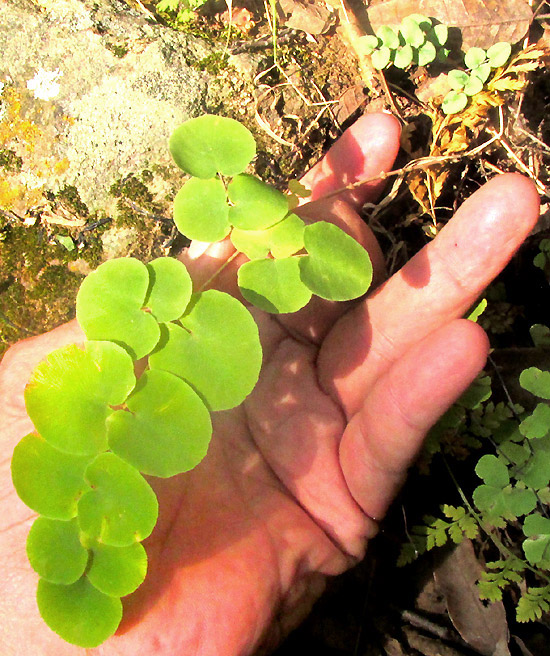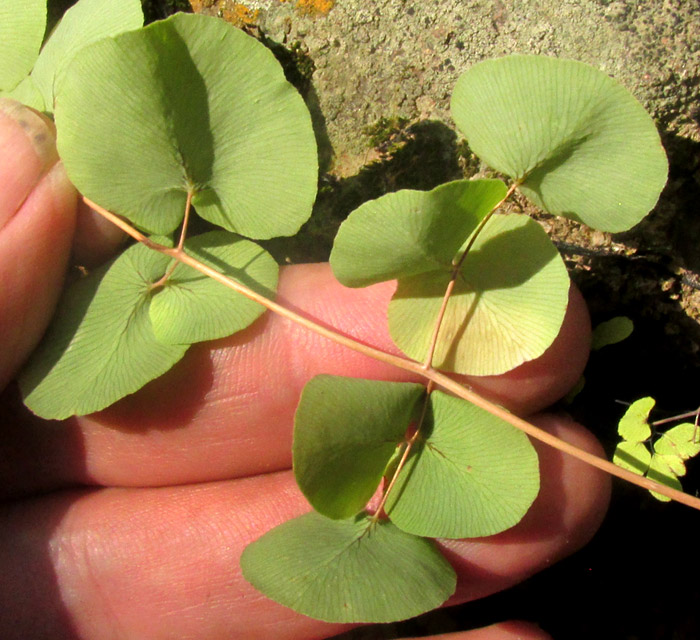Excerpts from Jim Conrad's
Naturalist Newsletter
Entry dated November 9, 2023, from notes taken near Cascadas de La Piedad waterfall 3kms NW of the community of San Pablo, municipality of Almeaco de Bonfil; in canyon of La Piedad below the falls; N20.1017°, W100.0041°, elevation 2360 meters (7750ft); extreme southern Querétaro state, MÉXICO
HEARTLEAF CLIFFBRAKE

In the bottom of La Piedad canyon, on a mossy, volcanic, balsatic boulder, the above fern with its few, large pinnae was an unusual one. The frond's tip pinnae were undivided, while those closer to the root were divided into pinnules. This was the habitat and general growth form of a cliff brake, genus Pellaea, but cliff brakes usually look more like the Purple-stem Cliffbrake; these roundish, oversized pinnae and pinnules with deeply heart-shaped, or cordate, bases were remarkable.

The fern was immature, not producing spores; mature cliffbrake pinna margins turn under forming false indusia from which spore-releasing sporangia emerge.

At the fern's base, frond stems, or stipes, bore exceptionally large, white, papery scales. Seeing so many atypical features, and with the pinnae being sterile, I wondered whether this might be a sterile hybrid.
But, no, it was one of six cliffbrake species occurring in Querétaro state, easy to recognize from the above features. There is another similar species here, but its pinna are not as circular as this fern's and pinna bases are not so deeply cordate. This is PELLAEA CORDIFOLIA, the Heartleaf Cliffbrake.
The fern's English name reflects the species' occurrence in a small part of arid southwestern Texas near the Mexico border. In Mexico it's widely distributed from the northern uplands south to Oaxaca. Apparently there's nothing unusual about Heartleaf Cliffbrake's genes.
I find no human uses for Heartleaf Cliffbrake, though I've read that often cliffbrake ferns are used to treat kidney stones. This must be a case of the Doctrine of Signatures. If cliffbrakes can break up the stones they grow on, they should be able to handle kidney stones.